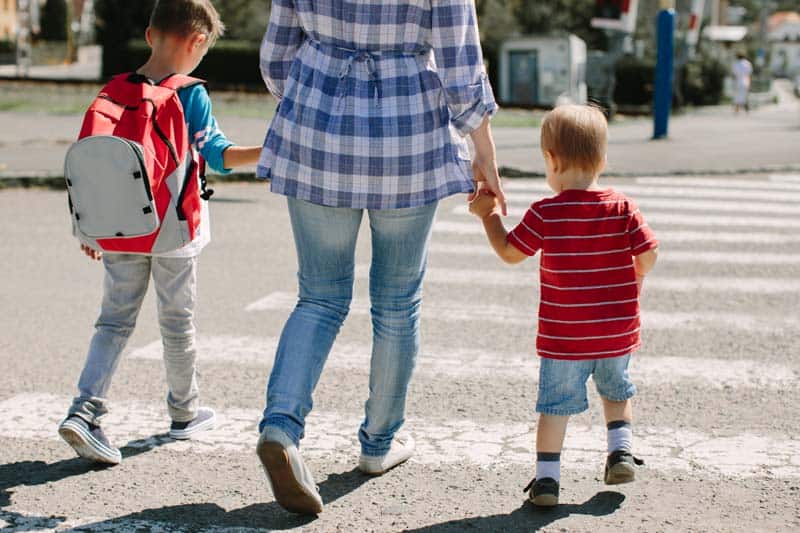Safe September: BayCare Kids safety expert shares tips to prevent injury
September is all about back-to-school, but it’s also the month set aside for a more sobering “b” word—boo boos.
National Childhood Injury Prevention Month is underway
No one sees more injuries than the people who work at hospitals. BayCare Kids Wellness and Safety Specialist Michelle Sterling shares the four top injuries health care workers see at St. Joseph’s Children’s Hospital, along with tips for preventing them from happening.
Bike/Pedestrian Crossing Injuries
Whether your child is a newbie kindergartner walking to school for the first time or if they are seasoned middle schoolers, it’s never too often that you can share these basic tips. They also apply just us much to the college student texting as they step out onto the road or the distracted adult cyclist.
- Always wear a helmet when riding anything with wheels—tricycles, scooters, bicycles, skateboards. Make sure the helmet fits. Safe Kids Worldwide says there should be no more than one or two finger widths between the eyebrows and bottom of the helmet and straps should form a V under the ears when buckled properly.
- Look left, right, left, before crossing the street, even when the street seems empty as you walk up to the crossing. Always take a beat to pause at the edge of the road instead of stepping right out onto the crossing.
- Use crosswalks, be aware of the surroundings and put that phone away when crossing the street. Drivers are often distracted, and darting out from between parked cars into traffic can surprise drivers and cause accidents.
- Wear bright clothing; it’s easier for motorists to spot, especially at dusk and in the evening hours.
Child Passenger Injuries
Now that the school year is under way, most kids are preparing to spend hours in their cars being ferried to school and activities. But being a child passenger comes with hazards that you can minimize by following these tips:
- Choose the right car seat according to age, height and weight guidelines, which you can find on the manufacturer’s packaging.
- Keep a child rear-facing until they are 2 years old and children in the back seat until they are 13 years old.
- Never leave a small child alone in the vehicle, even if you are popping into a store to pick up just one thing. Heat stroke in cars is a significant cause of child death in Florida.
- Lock your vehicles when you are at home. Toddlers have been known to enter unlocked vehicles, be unable to to find their way out and become stuck, sometimes with fatal consequences

Water Safety
We’re surrounded by pools, ponds, lakes and the sea, which is a wonderful thing until child safety is involved. With still-hot temperatures outside, the temptation to jump into the pool without waiting for an adult can be overwhelming, so make sure you follow these guidelines:
- Always designate a “water watcher,” an adult whose only responsibility is to watch kids in the pool.
- Install pool fences and self-latching gates. Arm door and window alarms so you can tell if a child exits the house and enters the pool area.
- Remove all temptations. Empty buckets and inflatable pools. Put away all toys and floating objects from the surface of the pool.
- Teach your child to swim. If you do use a flotation device, only trust a U.S. Coast Guard approved life jacket, not an ordinary blow-up floatie that will only give a child a false sense of security.
- Indoors, make sure you have everything you need for baby’s bath before you put the baby in the tub. Don’t leave a baby unsupervised for a moment, even in just inches of water.
Unsafe Sleep
Sadly, deaths from unsafe sleeping habits continue to rise in Hillsborough County where harrowing accounts of babies suffocating in beds and wedged into couches have come to light. While it’s tempting to snuggle all night long in bed, these tips will ensure a safer night for everyone:
- Remember the ABCs of safe sleep: Baby should sleep Alone on their Back in a Crib.
- A crib is not the only option, but it’s important the baby sleeps on a firm, flat surface inside something like a crib or pack and play. Use only a fitted sheet and do not put anything else inside that can be a suffocation hazard, such as a blankets or stuffed animal.
- If you want to stay close to baby, share a room, not a bed.
For more information about child safety and prevention, visit StJosephsChildrens.org. Salud to a Safe September!
*Presented by BayCare | Originally published in September 2023 of Tampa Bay Parenting Magazine.


